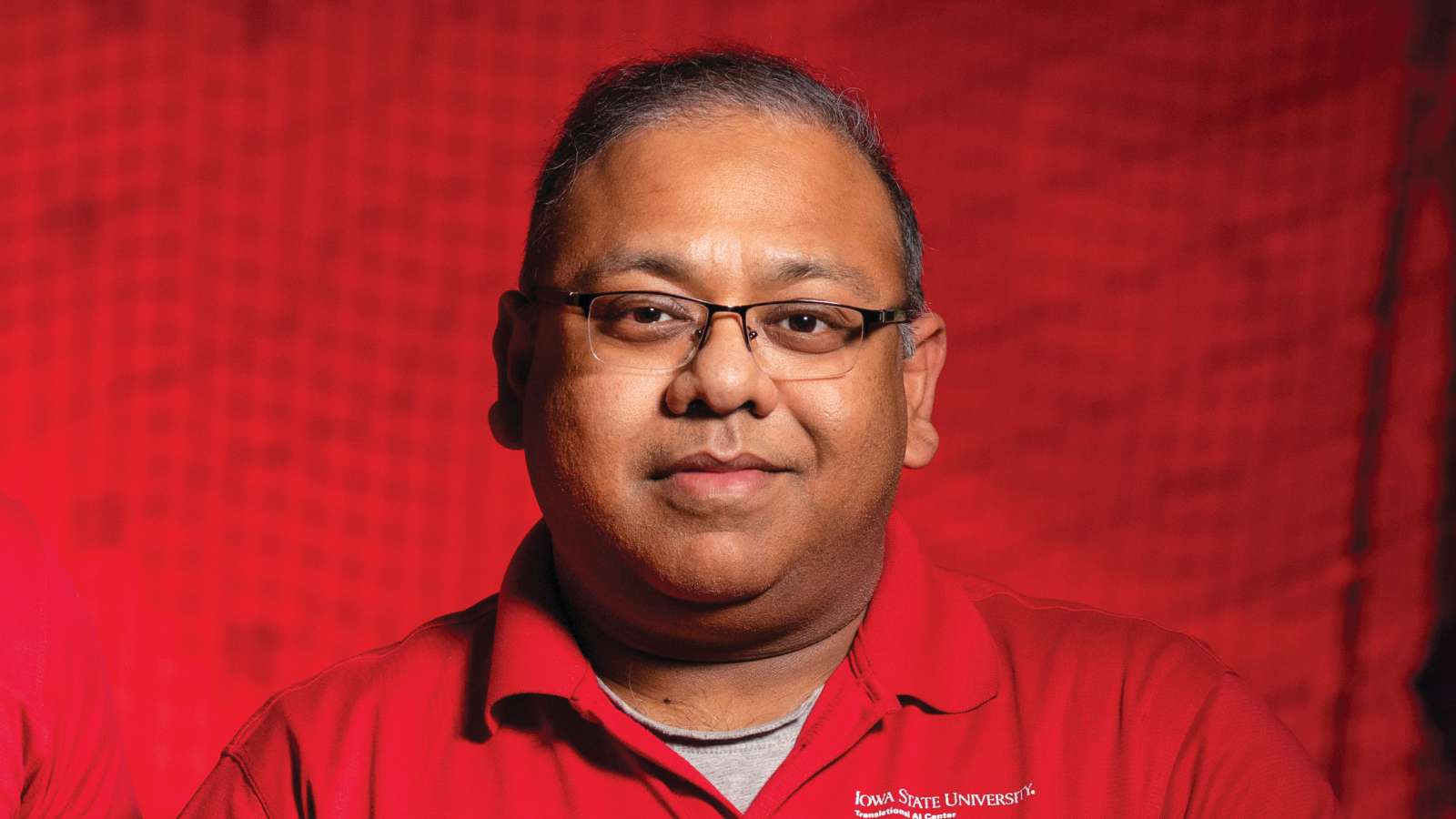For three years, Iowa State University’s Translational AI Center (TrAC) has been the center of artificial intelligence (AI) research at the university.
Soumik Sarkar, director of the center and associate director of the AI Institute for Resilient Agriculture, says the center’s goal is to get AI research applied, commercialized, and translated into practice.
“We also want to help the Midwest get ready for an AI future — upskilling and reskilling the workforce, and general awareness,” Sarkar says.
Sarkar answered a few questions about TrAC, and the use, tools, and detection of AI.
What does TrAC do at Iowa State?
We mainly do three things. One is AI plus X research, which means core AI research as well as AI applied to different sectors. That could include agriculture, manufacturing, transportation, healthcare, and so on. Number two is AI plus X training. Throughout the year, we run a lot of tutorials, workshops, research seminars, bootcamps, and micro credentials, both for Iowa State audiences and the general public. The third thing is AI plus X workforce, which means that we are training a lot of undergraduate and graduate students within Iowa State who are going out to different companies or starting their own businesses that have AI as a core element.
How does the center navigate concerns and controversies around the use of AI?
It’s a controversial topic. Within our center, we have AI ethics as a separate area dedicated just for these conversations. We collaborate with social sciences faculty members who are trained to think about ethical implications, social dynamics, and social science context with folks like myself — AI engineers and computer scientists — who have the technical know-how.
But of course, we are not policymakers. The fact is AI is going to change the nature of our jobs, our work across the board as educators from university professors to kindergarten teachers. It’s going to change how we do things for all of us. Now, if we own this and we try to stay ahead of the curve and actively figure out how to leverage it and become a user of these tools rather than a competitor, the better off we’ll be, right? It’s becoming a cliché to say this, but I still feel that it’s true: You’re not going to be replaced by AI, but you’re going to be replaced by people who will use AI better than you.
How would you recommend people start using AI if they want to get familiar with it?
I feel like right now, tools wise, writing is the most advanced. The email provider you use likely has an AI tool to help you write or complete your emails. Then moving from that if you’re writing a blog post or you’re building your resume, you can use AI tools to get a first draft. Or another interesting way to use it is to write something and then ask an AI tool: “What do you get out of this? Can you summarize this?” That allows you to check whether what you think you are trying to communicate is the same as how the AI tool is understanding your text; you can use it as a writing buddy. Another way you can use it is for office task management — organizing calendars, summarizing meeting notes, etc. Just remember: you ultimately have to review whatever you generate from AI, you cannot completely rely on AI alone.
How can people identify AI-generated photos?
If a photo is too glossy, too perfect, very smooth. Look at textures and details of any extremities — hands, fingers, there is going to be a little wiggle or maybe there’s symmetry issues. Images also might be a little bit cartoony in some cases. These are all possible clues that something is AI generated. But the thing is, AI is getting better every day, so whatever I just said may be wrong soon. In six months, you may not see those clues. There are also a lot of AI generation detectors coming out; these tools aren’t 100% accurate, but most of them can catch if something is AI generated.
